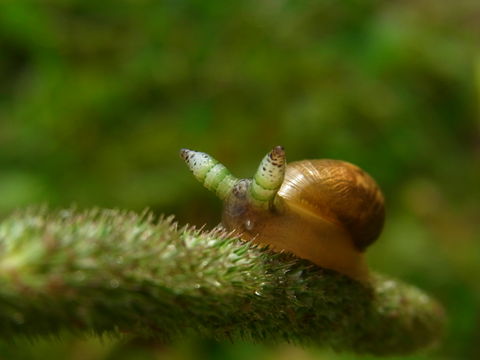Nutrition
Snails consume a diverse number of foods, including algae, fungi, decaying organisms and living organisms. In the Cumberland region where many of the Cumberland liptooth snails reside there are abundant legumes. This vegetation is normally what these snails feed on; they find it much easier to feed on the decomposing plant material than the living (Dourson 2010). Land snails, although preferring plants as their main source of nutrition, will eat most anything they run across including environmental contaminants. The pollution is then absorbed into the tissues of the snail which makes them good indicators of pollution in the area. (Pennsylvania Land Snails 2012).
Snails use saliva and their radula to begin breaking food particles down. The radula is a membrane covered in teeth made of chitin (Hickman, 2012). After being consumed, the food is then swallowed through the esophagus and into a gastric pouch. The gastric pouch absorbs the food and helps in excreting the waste by moving it into the intestine and eventually out the anus (Pennsylvania Land Snails 2012).

Once born snails need to rapidly find a source of calcium (Dourson 2010). The first thing a land snail will consume is their egg shell with contains calcium and will help their undeveloped shell harden and grow. They obtain calcium from their soil and rocks in the environment. Using their radula they grind stones or soil, containing calcium carbonate in order to easily digest it.(Hickman, 2012). In the regions occupied by Millerelix plicata, there are many rich calcium deposits. (Ecoregions of Kentucky 2012). Once digested, the calcium is absorbed in the intestine and put into the growth of their shell.
According to DeLaCruz, Millerelix plicata has many predators, including hedgehogs and many birds. The snail serves as an intermediate host for the flatworm, Leucochloridium paradoxum. This parasite, coming from the phylum Platyhelmithes and class Termatoda prevents snails from retracting their antenna allowing birds to spot snails much easier. Birds then serve as Leucochloridium’s final host in their lifecycle.
Please continue onto Reproduction to learn more.